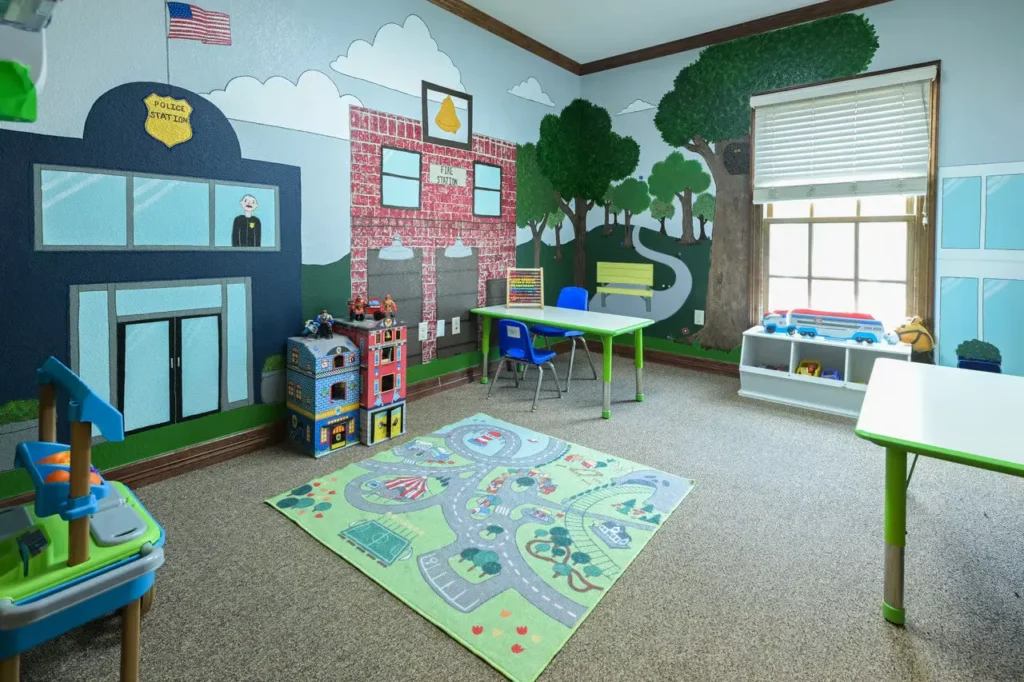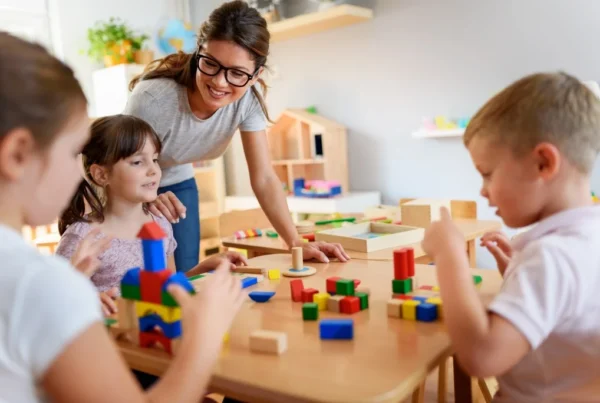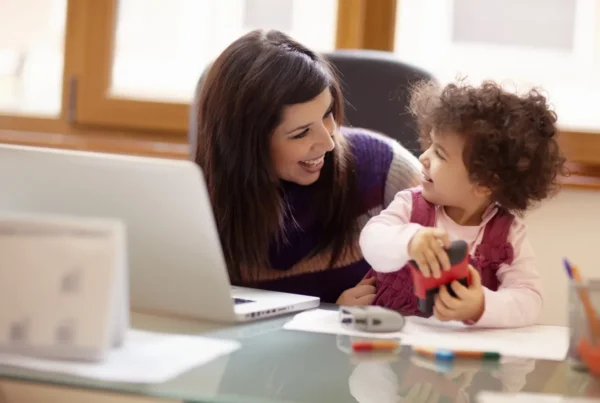Parents can significantly boost their child’s speech development at home by turning daily routines into learning opportunities, using common household items creatively, and making practice sessions fun and engaging.
These simple strategies help reinforce what children learn in therapy while building confidence in natural settings. Jill Dews, M.A., CCC-SLP, has guided families at Let’s Talk Speech and Language Therapy in Mission Viejo for over 20 years. Let’s Talk Speech and Language Therapy was also recently voted “Best Speech Pathologist” in Ladera Ranch California, a fantastic accomplishment.
To successfully engage children in at-home speech improvement, parents should combine wisdom with creativity by turning daily routines into teachable moments, using common items as educational tools, and ensuring sessions are enjoyable so learning becomes a natural part of a child’s life.
Understanding Your Child’s Unique Communication Needs
Every child develops speech and language skills differently, which means home practice should be tailored to address their specific challenges and build on their individual strengths.
Individual assessment helps parents recognize what type of communication support their child needs most. Some children struggle with pronouncing certain sounds, while others have difficulty understanding complex instructions or expressing their thoughts clearly. Understanding these specific patterns helps parents choose activities that target the right areas.
Developmental milestones provide helpful guidelines for knowing what communication skills to expect and practice at different ages. Children who aren’t meeting typical milestones may benefit from extra practice in specific areas, while those who are ahead might enjoy more challenging activities.
Contextual observation means watching how your child communicates in different situations throughout the day. Here are important things to notice about your child’s communication:
- How clearly they speak during relaxed family conversations versus stressful situations
- Whether they follow directions better with visual cues or verbal instructions alone
- Which topics or activities naturally encourage them to talk more
- How they interact with different family members or friends
Professional coordination ensures that home activities that ASHA recommends, support the same goals being worked on in formal therapy sessions, creating consistency that helps children make faster progress.
Making Daily Life Your Speech Therapy Classroom
The most effective speech practice happens naturally during regular family activities rather than in formal sit-down sessions that can feel stressful or boring to children.
| Daily Activity | Natural Speech Opportunities | Skills to Practice |
|---|---|---|
| Mealtime Conversations | Family is already gathered together for natural interaction | Encourage your child to describe what they’re eating, make choices about food preferences, or tell about their day using complete sentences and clear pronunciation |
| Household Routines | Getting dressed, cleaning up toys, or preparing for bed | Ask your child to name clothing items, describe what they’re doing, or follow multi-step directions that build both language comprehension and expression skills |
| Transportation Time | Car rides to school or activities create perfect conversation moments | Play word games, sing songs, or have your child describe what they see outside the window to build vocabulary and speaking confidence |
These everyday moments transform ordinary activities into powerful learning experiences. Your child practices communication skills without feeling pressure, making speech development a natural and enjoyable part of family life.
Creative Uses for Everyday Household Items
Speech therapy doesn’t require expensive equipment when you can transform common household objects into engaging communication tools that children find interesting and fun.
Kitchen utensils and containers become instruments for breath control and oral motor exercises. Drinking through straws builds lip strength, while blowing bubbles or moving cotton balls with breath helps develop the airflow control needed for clear speech.
Art supplies like crayons, paper, and stickers can support language development through creative activities. Have your child describe their artwork, tell stories about their drawings, or follow directions for craft projects that combine creativity with communication practice.
Everyday objects transform into storytelling props when children use their imagination. Here are simple household items that make great speech therapy tools:
- Empty boxes become houses, cars, or robots for imaginative play and storytelling
- Magazines and catalogs provide pictures for vocabulary games and conversation starters
- Mirrors help children see their mouth movements while practicing difficult sounds
- Flashlights create fun games for following directions and describing hidden objects
Technology resources like family photos on phones or tablets can prompt memory sharing and descriptive language when children tell stories about family experiences and special events.
Building Language-Rich Home Environments
Creating a home atmosphere that naturally encourages communication helps children practice speech skills throughout their daily routines without feeling pressured or overwhelmed.
Narrating daily activities helps children connect words with actions and experiences. As you cook, clean, or complete tasks, describe what you’re doing using rich vocabulary that expands your child’s understanding and gives them language models to follow.
Reading together regularly exposes children to new vocabulary, sentence structures, and storytelling patterns. Choose books that match your child’s interests and encourage them to participate by predicting what happens next, answering questions, or retelling favorite parts.
Positive reinforcement encourages children to keep practicing by celebrating their communication attempts rather than focusing on mistakes. Praise effort, acknowledge improvement, and create an atmosphere where trying to communicate feels safe and rewarding.

Recognizing When Extra Support Is Needed
Parents should know what signs indicate that home practice alone might not be sufficient and when professional guidance could help accelerate their child’s communication development.
Progress monitoring involves noticing whether your child is making steady improvements in their speech and language abilities over time. While development happens at different rates, you should see some positive changes with consistent practice and support.
Frustration indicators include increased resistance to communication activities, emotional outbursts during speech practice, or signs that your child is becoming self-conscious about their communication abilities. These signals suggest it might be time for professional evaluation.
Emerging challenges may appear as your child grows and faces new communication demands at school or in social situations. New difficulties don’t necessarily mean previous progress has been lost, but they may require professional strategies to address effectively.
Accessing Support and Professional Resources
Families benefit from connecting with reliable information sources and support networks that enhance their ability to help their children’s communication development at home.
| Resource Type | What It Provides | How It Helps Families |
|---|---|---|
| Online Resources from Professional Organizations | Evidence-based information about speech and language development | Reputable websites offer activity ideas, developmental milestone information, and guidance for supporting children with various communication needs |
| Community Connections | Local support groups, library programs, or parent networks | Provide opportunities to learn from other families and share successful strategies; offer both practical tips and emotional support for the communication journey |
| Professional Consultation | Personalized guidance from speech therapists | Helps families develop effective home practice routines that address their child’s specific needs; therapists demonstrate techniques and help troubleshoot challenges that arise during home practice |
These resources work together to create a comprehensive support system. Families gain knowledge, build connections with others on similar journeys, and receive expert guidance tailored to their child’s unique needs.
Creating Positive Speech Practice Experiences
Successful home speech development depends on maintaining an encouraging, low-pressure environment where children feel motivated to practice and take communication risks.
Fun-focused activities ensure that speech practice feels like play rather than work. Games, songs, silly voices, and imaginative play naturally encourage children to use language while enjoying themselves and building positive associations with communication.
Growth mindset approaches celebrate effort and improvement rather than demanding perfection. When parents focus on progress and treat mistakes as learning opportunities, children develop resilience and confidence in their communication abilities.
Cultural connections through family traditions, stories, and values make speech practice more meaningful and personally relevant. Here are ways to incorporate family heritage into communication activities:
- Share stories about family history and cultural traditions
- Teach words or phrases from family languages or dialects
- Celebrate cultural holidays with language-rich activities and discussions
- Connect communication goals to family values and experiences
Pressure-free practice means allowing children to communicate at their own pace without constant correction or demands for perfect speech. This supportive approach encourages natural language development and maintains motivation.
Supporting Your Child’s Communication Journey
Parents serve as the most important partners in their child’s speech and language development by providing consistent encouragement, natural practice opportunities, and collaborative support with professional services. Active engagement in daily communication creates countless opportunities for children to practice and develop their abilities in meaningful contexts.
Resilience building happens when families work through communication challenges together with patience and persistence. Children develop confidence and determination when they see that effort leads to improvement and that everyone in the family supports their communication growth.
Let’s Talk Speech and Language Therapy in Mission Viejo provides families throughout Orange County with expert guidance on implementing effective home practice strategies. Jill Dews’ experience developing tools like the Let’s Talk Early Intervention app ensures that parents receive practical advice that fits into their daily lives while supporting their child’s unique communication development journey. Schedule your consultation today!
Let’s Talk Speech and Language Therapy
27285 Las Ramblas, Suite #210
Mission Viejo, California 92691
(949) 218-0508
Driving Directions
Jill Dews, M.A., CCC-SLP
CA License #: SP12461
Link to Verify License
Frequently Asked Questions
Can parents really improve their child’s speech at home?
Parents play a crucial role in their child’s speech development through daily interactions, conversations, and activities that reinforce therapy goals. Regular, enjoyable communication practice at home can significantly enhance speech progress when combined with professional guidance and appropriate activities for your child’s needs.
What if my child isn’t showing improvement with home exercises?
If progress seems stalled despite consistent home practice, consider consulting a speech-language pathologist for professional evaluation. They can assess whether current activities are appropriate, suggest modifications to your approach, or determine if additional support or different strategies might be more effective.
Are expensive tools required to help with speech improvement?
Effective speech practice can use simple household items and everyday activities rather than expensive equipment. Creativity and consistency matter more than costly tools. Common objects like mirrors, magazines, kitchen utensils, and art supplies can become powerful speech therapy resources when used thoughtfully.
Related Articles





